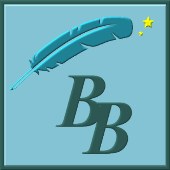This is the 7th of an 18 part series on How to be a DM. To start at the beginning, click here.
 You have defined your universe by picking a theme and the set of rules that govern. You have chosen a story to tell. Now you have to decide how to present the stage to your players
You have defined your universe by picking a theme and the set of rules that govern. You have chosen a story to tell. Now you have to decide how to present the stage to your players
.
Your players need a description of everything on the stage, everything they can detect with their senses. You must describe every sight, sound, and smell they experience.
How does that damp dungeon feel on their skin? Does the innkeeper have a high or a low voice? How large is that ogre that walked out from behind the tree? How far away are those archers and will their arrows reach them?
There are many different ways to show the world of your adventure to your players. With the introduction of 5e, there was a renewed interest in theater of the mind.
Theater of the Mind
The term “theater of the mind” (TotM) originated in radio and referred to actors using strictly verbal descriptions and sound to present a story to listeners. Some RPG groups use this approach and verbally describe every scene and action and do not use visual elements such as maps or miniatures. Although this approach works for some groups, I personally believe there are serious limitations.
When I originally played D&D in the 80’s, TotM was commonly used. Verbal descriptions of both the setting and the precise location of each player were specified. This is fine for exploration during an adventure, but the approach fell apart during combat, a key part of RPG in which every moment counts.
Keep in mind that with every story, there is a pacing that needs to be maintained. Part of your job is to control the pacing for dramatic effect, especially during combat. With strictly verbal descriptions, combat is open to so much confusion. This is how typical combat went:
Othgar the Barbarian: “My fighter sneaks up behind the ogre swinging my axe!”
DM:”No, you can’t do that, he’s too close to the wall.”
Othgar: “You didn’t say that. Can I flank him with Valdora?”
DM: “No she’s too far away.”
Othgar: “Ugh. Let me think about it while I go get a Mountain Dew.”
Visual Elements
Visual representations of the environment can provide this detail without bogging down the narrative. It can also serve as a reminder of details like how many opponents there are and their exact status for the players. The old adage “Show, don’t tell” comes into play here. Show the players what is happening, don’t just tell them.
Also, keep in mind that many people are visual learners. I myself have a lot of trouble following directions that are only given verbally. It is like water through a sieve. I am always asking to SEE it when people describe situations.
If TotM works for your group, it certainly makes it easier to prepare for an adventure. However my experience has been that the technique generally only works when characters are exploring their environment. Combat provides too many obstacles.
Let’s discuss handling exploration in our next story titled Hmmm, I wonder what that is?
Bitzy the Bard
“Life is an adventure story and you are the star. Choose to play a hero!”


